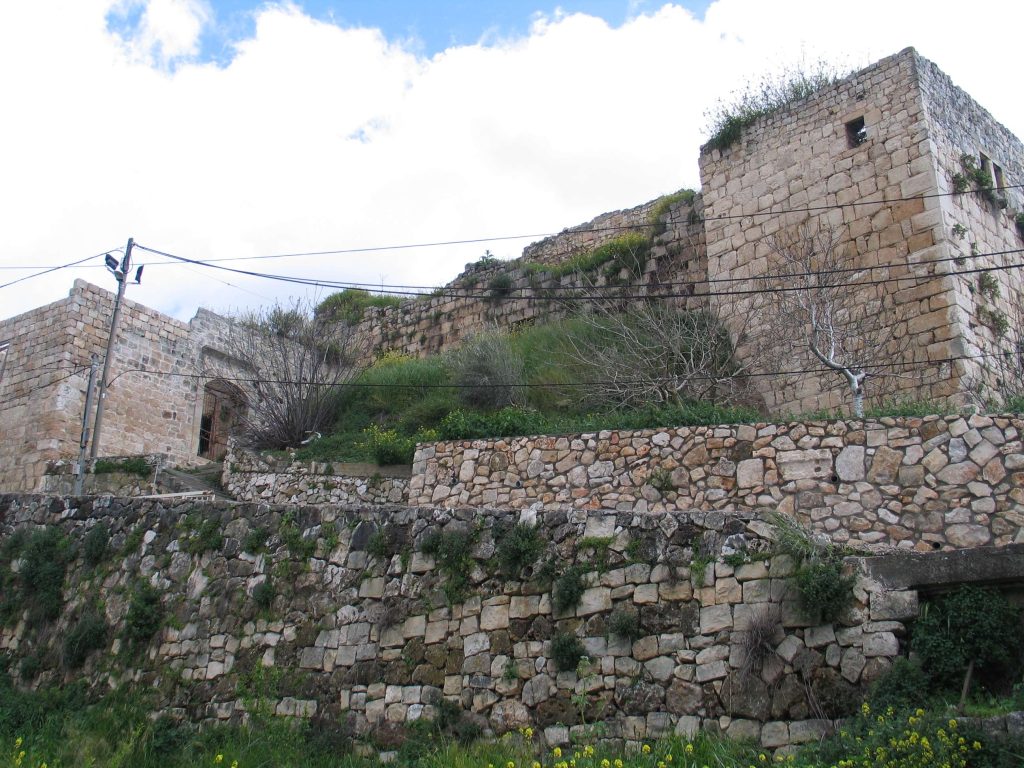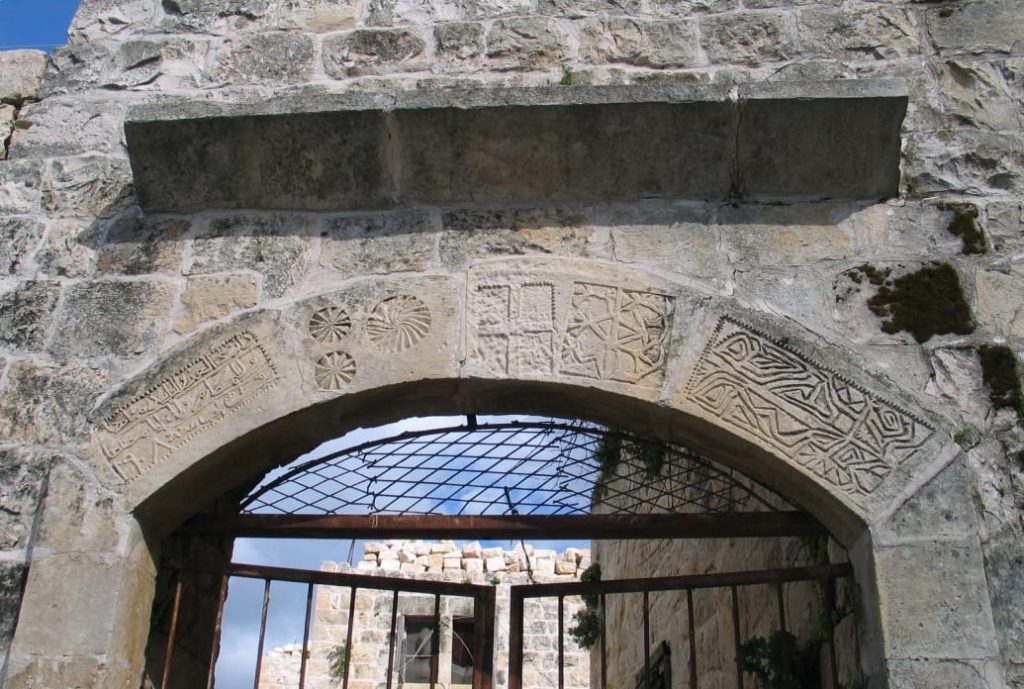King’s Castle also known as Chateau du Roi, is a Crusader fortress of the Castrum type located in the village of Mi’ilya in the Upper Galilee. The fortress was built by the Crusaders in the early 12th century as the fortress of King Baldwin III of Jerusalem and was one of a series of fortresses designed to protect the road that passes from the coast and from Acre towards the Galilee and the mountains of Lebanon. It also served as a Crusader bureaucratic center that collected taxes for the king and was called the “Fortress of the King” (Chateau du Roi). In the fort sat 8-7 knights to dominate the area which included about 70-80 villages.
In 1160 the fortress was the center of a large feudal estate of Guido de Milly, which came from a dynasty of nobles of French descent, who took possession of the Galilee estate. Its capital was named “Mi’ilya” after the de Millie family. This family was one of the most respected families, who owned thirty-six villages and farms and was the one who built the fortress of Monfort. The fort was owned by the family but they did not physically sit there
King’s Castle Changes Hands
In 1179 the uncle of King Baldwin IV, the nobleman Jocelyn III, married Agnes to the house of de Milly, thus inheriting Miilya and its environs. So Miilya was then the seat of the “senior” tribunals – for the nobles, and the “burger” tribunal – for the middle class. Jocelyn’s estate was divided between his three daughters, and the fortress of Mi’ilya was given to his son-in-law, Count Otto von Botenlauben, who married his daughter Beatrix de Courtenay.
It was built on top of the hill dominating the area. In fact, passengers who arrived at the site in the 19th century claimed that a structure with four square corner towers could be identified. Furthermore, King’s Castle was first noted in Crusader sources in 1160, when it was probably built during King Baldwin III’s reign, along with one of the biggest wineries in the Crusader states.
King’s Castle: It’s Final Days
The fortress was conquered by Saladin after his victory at the Battle of Hattin in 1187 and was returned to the Crusaders in 1192 as part of the Treaty of Ramla. In 1220, due to low incomes and high defense expenditures, the fort fell from its assets and Countess Beatrice von Hanberg sold it to Hermann von Salza, head of the German Teutonic Order in Israel, an acquaintance of her husband. Due to an inheritance dispute, the deal was approved only in 1228, but its importance and centrality declined due to the renovation of Monfort Fortress and its establishment as the center of the Teutons.
The Arab geographer, Al-Dimashqi, noted the “fine castle”, and that close to it was a very pleasant valley, where musk-pears and large citrons were grown. Victor Guérin found in 1875 that “on the highest part of the hill we remark the remains of an ancient Chateau du Roi fortress, flanked by four square towers; considerable portions remain, showing that it was built of regular blocks, some leveled plane and some embossed; the latter were reserved for the angles. The ruins and interior of this fortress are now inhabited by about twenty families, which have built their little habitations in the midst of the debris.”
The Remains of King’s Castle Today
Prior to construction, it was necessary to prepare the rocky ground for construction by quarrying and leveling the terrain. At the heart of the fort was a cistern that received water from cisterns outside the fort, which flowed water into it and the fort was built around it. Inside the building was an inner courtyard in which a large hall was built which was divided into additional halls.
The citadel today, to which modern homes are attached to it, has not been well preserved; However, the tower and some of the surviving walls can be seen. The southern wall serves as the northern wall of a house later built. In the western wall you can see a gate and above it a Mamluk inscription, which was placed in it after the Mamluks conquered the fortress from the Crusaders.



